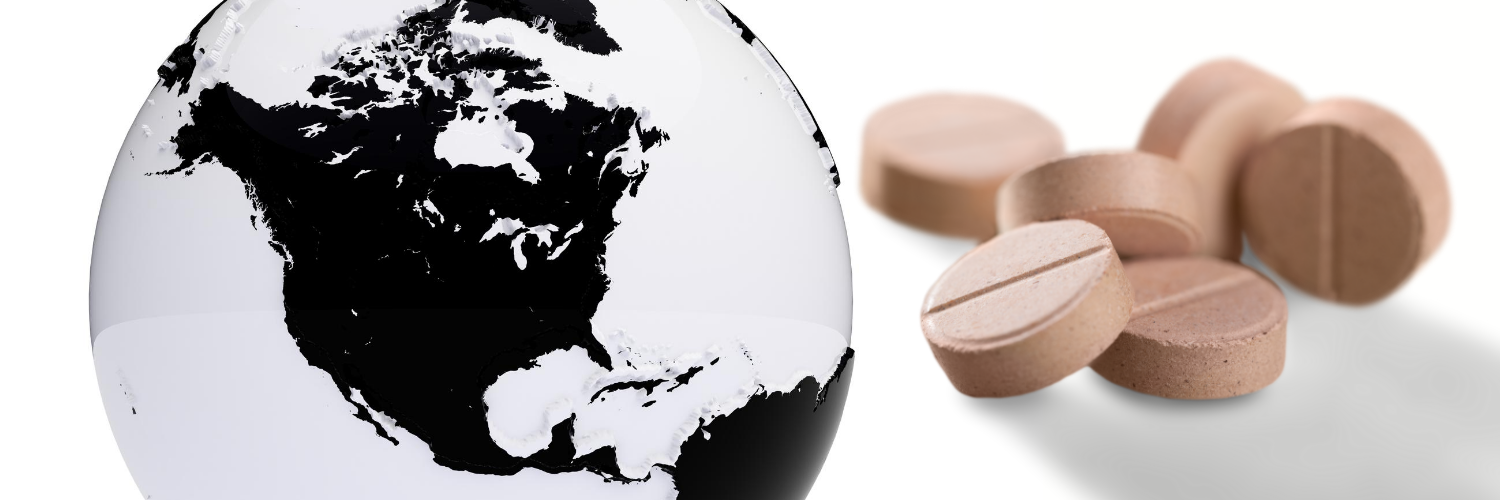The FDA approved a peanut allergy drug. How much does Palforzia cost?

For most of us, eating a candy bar or ice cream sundae doesn’t require a second thought. For those with a peanut allergy, it's a different ball game. In fact, peanuts seem to show up in dishes we wouldn’t expect like chili (peanuts can help make it thicker), pancakes, salad dressing, or even pizza. Those with this life-threatening allergy have to be incredibly cautious.
The FDA recently approved a new medication called Palforzia to help people suffering from allergic reactions like anaphylaxis when they are accidentally exposed to peanuts. Palforzia is taken daily and the dose is gradually increased for individuals aged 4 to 17 years. This approval may help give parents and kids the confidence to manage their allergies, but it's important to note that Palforzia is not a cure for your peanut allergy. The best way to prevent allergic reactions is to avoid exposure to the allergen. The bottom line: if you or your child has a peanut allergy, avoid peanuts altogether.
How does a peanut allergy work?
When someone has a peanut allergy, the immune system (aka our body’s Department of Defense for infections) mistakenly thinks peanuts are harmful, which causes our immune system to rev up to fight off the “threat.”. The severity of allergic reactions caused by peanuts are unpredictable as some people may have acute allergic reactions even after the slightest exposure.
You can be exposed to peanuts in multiple ways:
- The most common form of exposure is direct contact by eating peanuts or food that contains peanuts. Sometimes peanut contact with the skin can also cause an allergic reaction.
- You can also be exposed by cross contact where peanuts are in a product unintentionally. This usually happens if food is exposed to peanuts when being processed or handled.
- An allergic reaction may also be triggered if you inhale aerosol or dust that contains peanuts like a peanut oil cooking spray or peanut flour. You got it right: peanut allergies can be airborne. Of course there’s no need to risk it, but know that just smelling peanuts does not introduce the peanut protein into your body.
Allergic reactions may occur as soon as three minutes after exposure.
Symptoms of a Peanut Allergy
- Skin reactions like hives, itching, swelling
- Itchy or tingling feeling around the mouth or back of the throat
- Tightening of the throat
- Runny nose
- Shortness of breath
- Problems with digestion like diarrhea, nausea, vomiting, and stomach cramps
Pharmacist Warning: A life threatening reaction to worry about with a peanut allergy is food induced anaphylaxis. This is a medical emergency that requires immediate treatment with epinephrine (EpiPen) and going to the emergency room.
Signs and symptoms of anaphylaxis
- Throat swelling resulting in difficulty breathing
- Airway constriction
- Severe drop in blood pressure resulting in shock
- Increased heart rate
- Feeling lightheaded or dizzy
- Becoming unconscious
What are some ways to avoid accidental exposure to peanuts?
According to the FDA, about one million children in the U.S. have a peanut allergy and only one out of five children will end up outgrowing the allergy. When used with peanut avoidance, Palforzia helps reduce the risk of allergic reactions. However we all know that accidents happen and it's best to educate yourself with exposure precautions.
Pharmacist Tips on Avoiding Peanut Exposure
Avoid assumptions!
Don’t ever assume a food new to you doesn't contain peanuts. Peanuts can be lurking in some surprising places! For manufactured foods, you must always read labels to ensure they don't contain peanuts or peanut products.
Don’t ignore labels!
The FDA requires food labels to declare if the product contains a major allergen like peanuts, fish, milk, and egg. If a food label says something like “made in a factory that processes peanuts,” don't even think that it will be ok if you have just one bite. With peanut allergies, even the tiniest amount can trigger an allergic reaction.
Don't be afraid to say “no thank you”
You need to make your own decisions on what to eat when at restaurants or gatherings. People may not understand the risk and severity of a peanut allergy, so if you have a doubt, politely just say “no thank you.” It is not worth risking your health.
Have a reaction plan!
Accidents happen despite precautions. It is best to have an emergency plan ready. Speak with your provider on your options for carrying emergency medication like an EpiPen.
What treatment is used for peanut allergies?
The best treatment -- next to management through avoiding exposure -- is to slowly desensitize your body to the allergen, which is where oral immunotherapy comes into play. Immunotherapy involves slowly increasing doses of peanut-containing food over time. This does not cure a peanut allergy but could lower the severity of a reaction when accidentally exposed to peanuts.
Palforzia is the first FDA-approved oral immunotherapy drug for children with peanut allergies that incorporates this method of desentizing the peanut allergen to the body resulting in a lowered immune response when a reaction occurs.
For severe allergic reactions, the necessary treatment is an injection of a drug called epinephrine (EpiPen) and going to the emergency room. Learn more about EpiPen here.
How do I take Palforzia?
Palforzia is taken by dose escalation, which means you start off with a low dose and gradually increase your dose until your body can tolerate a consistent maintenance dose. The three phases of Palforzia dose escalation may seem overwhelming at first, but don’t worry! This escalation therapy is designed for your safety so let's break it down and make it simple to understand.
Phase 1 - Initial Dose Escalation
You will take your first five doses of Palforzia at your provider's office to make sure you are able to tolerate the dosage. There will be an emergency medicine available if an allergic reaction occurs. These five doses will all be taken in one day while you are with your provider. Your provider will explain how to prepare Palforiza, but you should know it comes in capsules and sachets that contain the powder of the drug. You don’t swallow the capsules! This powder is emptied from the capsules or sachets and mixed into soft food like applesauce, pudding, yogurt, etc. Palforzia must also be stored in the refrigerator.
Initial Dose Escalation (All doses taken in one day) |
||
| Dose Level | Total Dose | How the Dose is Taken |
| A (Dose 1) | 0.5 mg | One 0.5 mg capsule |
| B (Dose 2) | 1 mg | One 1 mg capsule |
| C (Dose 3) | 1.5 mg | One 0.5 mg capsule + One 1 mg capsule |
| D (Dose 4) | 3 mg | Three 1 mg capsules |
| E (Dose 5) | 6 mg | Six 1 mg capsules |
Phase 2 - Up Dosing
If you are able to tolerate Phase 1, your provider will ask you to come to the office the next day so you can start Phase 2. This phase has 11 different dose levels of up-dosing (increasing your dose). You will updose every two weeks. Each initial updose will be taken at your provider's office to make sure you can tolerate the higher dose. If you are able to tolerate the new dose level, your provider will tell you to take that dose level daily around the same time at home. You cannot skip any doses.
Up-Dosing |
|||
|
Dose Level |
Total Dose |
How the Dose is Taken |
How long is the dose taken? |
|
1 |
3 mg |
Three 1 mg capsules |
2 weeks |
|
2 |
6 mg |
Six 1 mg capsules |
2 weeks |
|
3 |
12 mg |
Two 1 mg capsules + One 10 mg capsule |
2 weeks |
|
4 |
20 mg |
One 20 mg capsule |
2 weeks |
|
5 |
40 mg |
Two 20 mg capsules |
2 weeks |
|
6 |
80 mg |
Four 20 mg capsules |
2 weeks |
|
7 |
120 mg |
One 20 mg capsule + One 100 mg capsule |
2 weeks |
|
8 |
160 mg |
Three 20 mg capsules + One 100 mg capsule |
2 weeks |
|
9 |
200 mg |
Two 100 mg capsules |
2 weeks |
|
10 |
240 mg |
Two 20 mg capsules + Two 100 mg capsule |
2 weeks |
|
11 |
300 mg |
One 300 mg sachet (oral powder) |
2 weeks |
Phase 3 - Maintenance Dosing
Now, finally, if you are able to tolerate Phase 2, your provider will tell you to continue taking 300 mg of Palforzia daily at the same time every day as your maintenance therapy.
Palforzia Daily Maintenance Dosing |
||
|
Dose Level |
Total Dose |
How the Dose is Taken |
|
11y |
300mg |
One 300 mg sachet (oral powder) daily |
How much does Palforzia cost?
Palforzia is an expensive medication. The list price of Palforzia set by the manufacturer Aimmune therapeutics is $890 per month, which is about $11,000 a year!
Comparing Palforzia Prices |
|||
|
Drug (generic name) Strength Quantity |
U.S. Retail Pharmacy Price |
Lowest PharmacyChecker U.S. Discount Coupon Price |
Percentage Savings |
|
Palforzia ([Peanut ( Arachis hypogaea) Allergen Powder-dnfp]) Initial Dose Escalation 0.5mg - 6mg |
$36.99 |
$35.46 |
4% |
|
Palforzia ([Peanut ( Arachis hypogaea) Allergen Powder-dnfp]) Level 1 3 mg |
$534.99 |
$445.82 |
17% |
|
Palforzia ([Peanut ( Arachis hypogaea) Allergen Powder-dnfp]) Level 2 6 mg |
$534.99 |
$445.82 |
17% |
|
Palforzia ([Peanut ( Arachis hypogaea) Allergen Powder-dnfp]) Level 3 12 mg |
$534.99 |
$445.82 |
17% |
|
Palforzia ([Peanut ( Arachis hypogaea) Allergen Powder-dnfp]) Level 4 20 mg |
$534.99 |
$445.82 |
17% |
|
Palforzia ([Peanut ( Arachis hypogaea) Allergen Powder-dnfp]) Level 5 40 mg |
$534.99 |
$445.82 |
17% |
|
Palforzia ([Peanut ( Arachis hypogaea) Allergen Powder-dnfp]) Level 6 80 mg |
$534.99 |
$445.82 |
17% |
|
Palforzia ([Peanut ( Arachis hypogaea) Allergen Powder-dnfp]) Level 7 120 mg |
$534.99 |
$445.82 |
17% |
|
Palforzia ([Peanut ( Arachis hypogaea) Allergen Powder-dnfp]) Level 8 160 mg |
$534.99 |
$445.82 |
17% |
|
Palforzia ([Peanut ( Arachis hypogaea) Allergen Powder-dnfp]) Level 9 200 mg |
$534.99 |
$445.82 |
17% |
|
Palforzia ([Peanut ( Arachis hypogaea) Allergen Powder-dnfp]) Level 10 240 mg |
$534.99 |
$445.82 |
17% |
|
Palforzia ([Peanut (Arachis hypogaea) Allergen Powder-dnfp]) Level 11 300 mg |
$534.99 |
$445.82 |
17% |
|
Palforzia ([Peanut (Arachis hypogaea) Allergen Powder-dnfp]) Level 11 (Maintenance) 300 mg |
$1069.98 |
$885.75 |
17% |
Sources: U.S. Retail Price calculated based on cash price at a Walgreens pharmacy in zip: 01852. U.S. Prescription Discount Card Price based on pricing near White Plains, New York (Zip:10605).
Where is Palforzia manufactured?
Palforzia sold in the U.S. for the Initial Dose Escalation is manufactured by Aimmune therapeutics in the U.S. (Florida).
Learn more about savings on allergy medication and online pharmacy safety
Which antihistamines don't cause drowsiness? How do antihistamines work?
How much does an EpiPen cost? Is there a more affordable option?
Coronavirus (COVID-19) Update: Warnings on Potential Treatments
Do you have questions or concerns about safely accessing medication, whether locally or online? We’re here to help.




